Sit and wait. The garden remains under a cover of snow, and worse, ice along packed down, well traveled paths. Temperatures have only occasionally risen above freezing for several weeks, and I am ever more anxious to get outdoors, to do something.
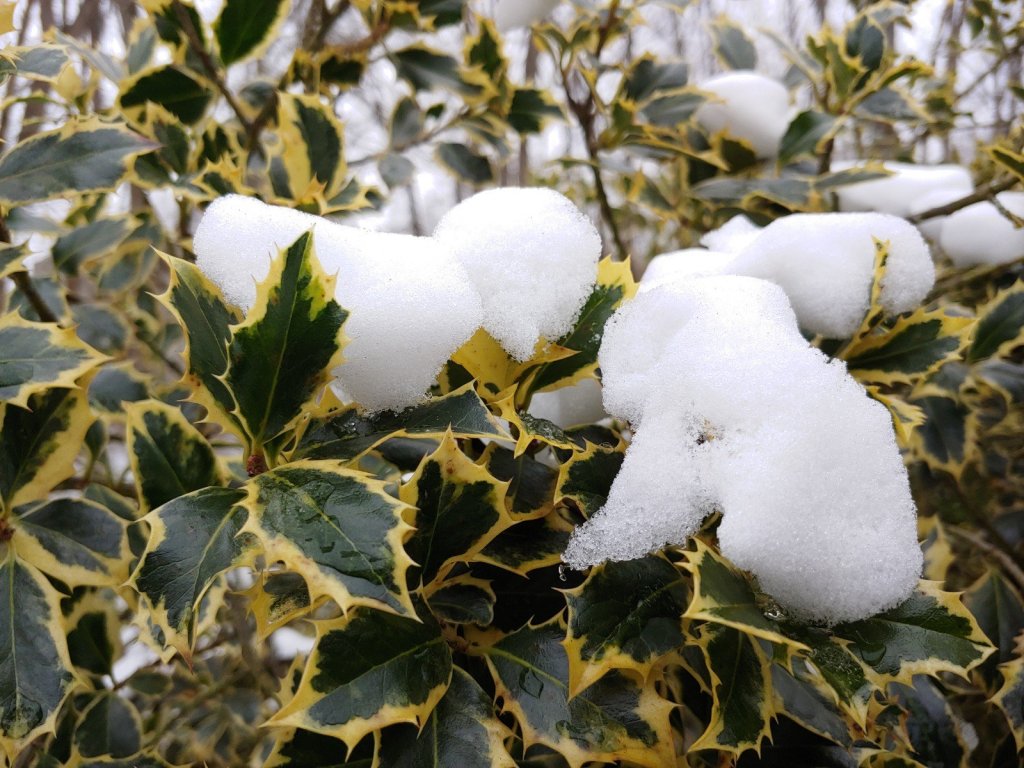
As soon as it’s safe to walk around without slipping and sliding, I must get to a daylong chore to clean up branches that litter the front half of the garden. I’ve never seen so many, and fortunately most are small, but a bit of work will also be required to clean up breaks from a few major branches in dogwoods and Japanese maples. There’s always a concern pruning disease prone dogwoods, but I expect the damage won’t be noticed once the trees leaf out.
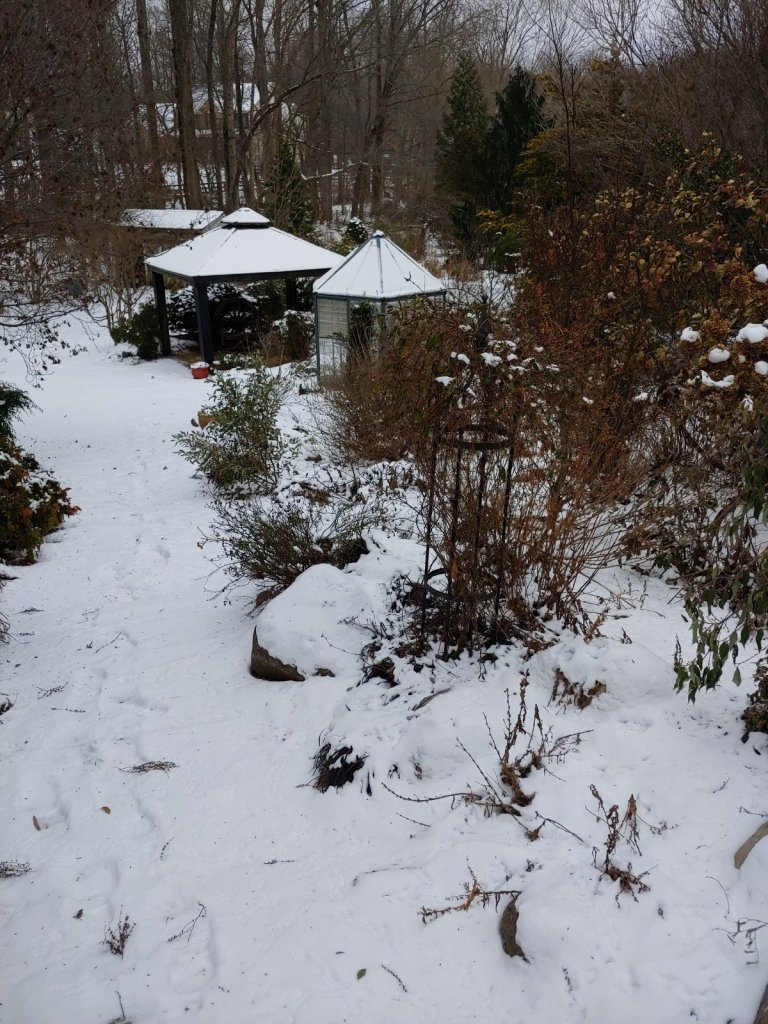
I do not mulch the garden except with fallen leaves and small twigs that fall are broken into smaller pieces and scattered around. A close look beneath and between plants is a bit of a mess, but most ground is covered by plants so it hardly shows. At least, I don’t notice it. I don’t know if crumbling the sticks into mulch is more time consuming than hauling them off to the compost pile, but it seems worthwhile.
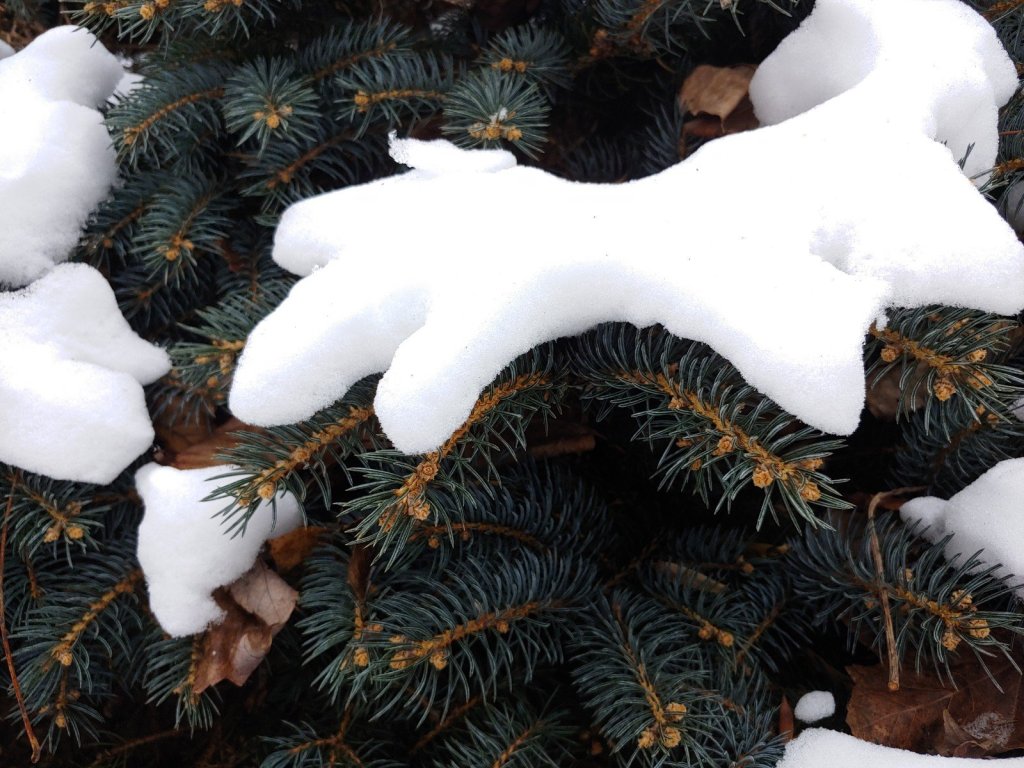
Plans for spring planting have been considered once, then again, and today I’m delighted that five small Japanese maples have been delivered, though I have barely a clue where any will be planted. This is standard procedure here, buy, then figure out where to plant, and of course this is not recommended, though it usually works out. My wife, of course, prefers a more considered approach, and yes she is correct, but she’s very aware that’s not the way things will work around here.
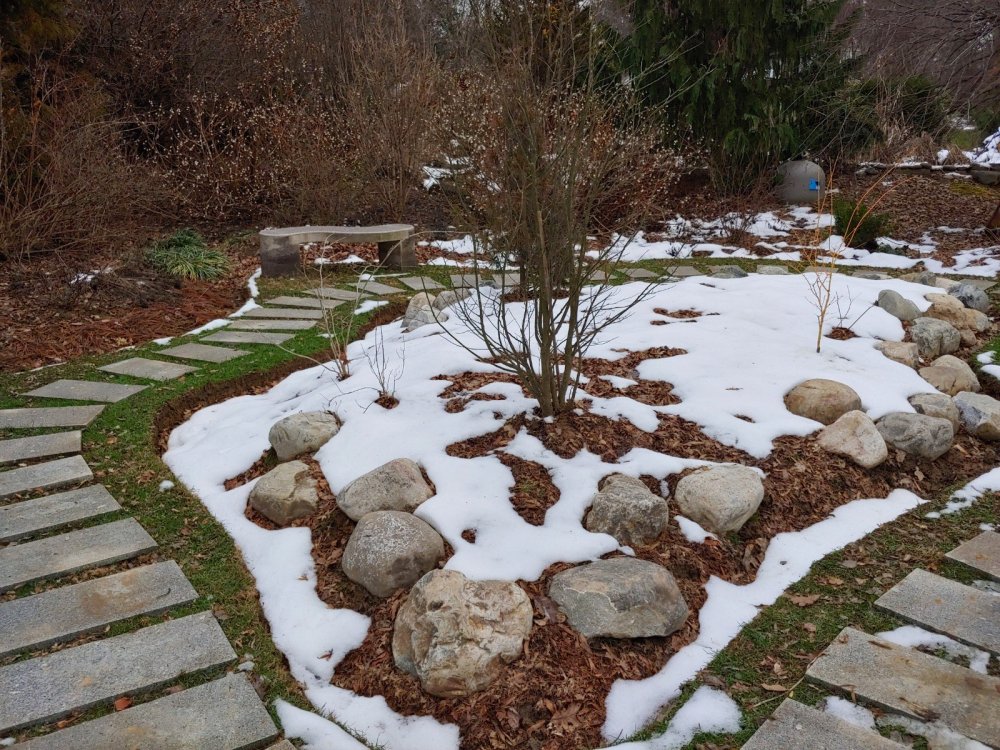
A new area in the lower, rear garden has been dug (above), and possibly one or two of the dwarf maples will be fit in, but I’m looking for a filled in look from the start and these will be far too small. A couple of the Japanese maples are very dwarf, so those will be plugged into gaps after larger plants go in.
The maples will be stashed in the unheated greenhouse until warmer temperatures return. This is another benefit of the small greenhouse that now holds several tender mangaves, and a few small trees delivered in early December that will be moved into larger containers to sit on the patios until they’re a bit larger. It is cold in the greenhouse, but slightly warmer than outdoors and of course plants there are protected from drying winds that can be a problem through the winter.
Two slightly tender orange flowered Osmanthus fragrans delivered in December have been stored in the basement along with other mangaves and assorted non-hardy container plants. The osmanthus are likely to be planted in protected spots in the spring, but they went into the basement instead of the greenhouse because one flowers continually through the winter, and even with my olfactory limitations, the scent is strong when I sniff from within a few inches.
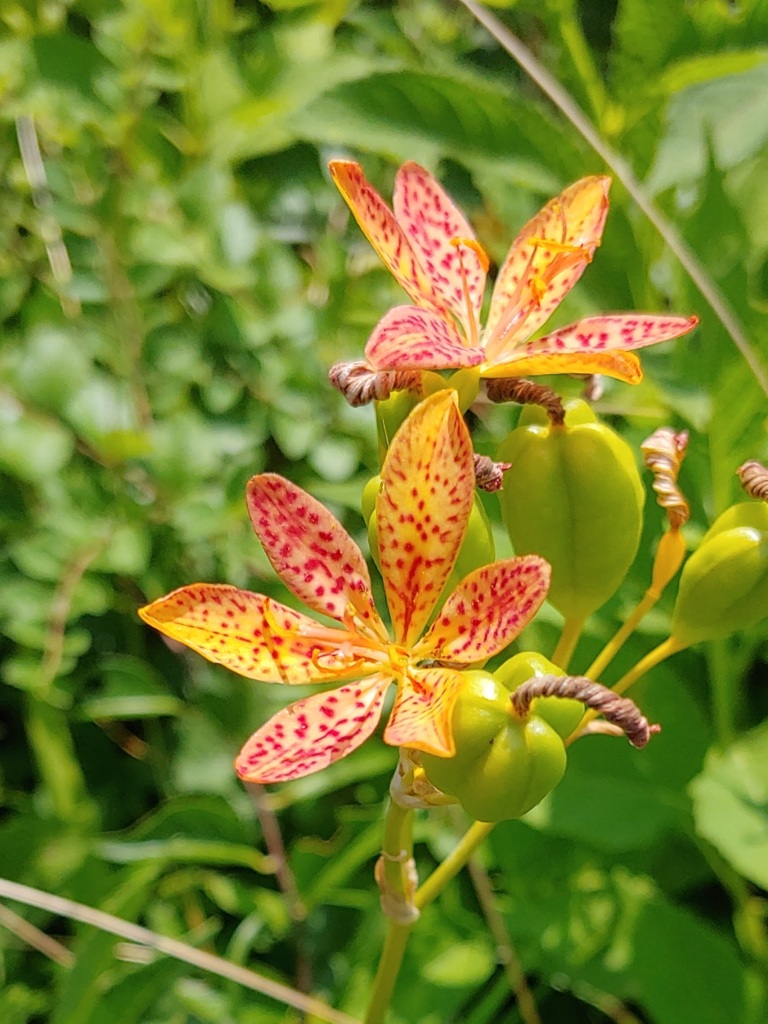
In a couple weeks I’ll sow Blackberry lily seeds (Iris domestica, aka Belamcanda chinensis, above) collected in autumn. Ones from a year ago did well, with seedlings going back into the garden but also to our two sons’ gardens. I’ve collected a good number more seeds this year, and there will always be space to plant more in the garden, but there should be more giveaways this spring. Last year, these were too young to flower, and I’ve heard that it’s possible to get first year flowering, though I expect that’s more likely in a heated greenhouse.

I am at least a little concerned by this long period of cold, and temperatures dropping regularly near ten degrees (Fahrenheit). There are a number of tender shrubs in the garden, and while most claim hardiness to five degrees, I’m skeptical, but also curious to test the limits of fatsias (above), cleyera, grevillea, and Schefflera delavayi. So far, so good, but sometimes it takes a spell of mild temperatures before a shrub realizes it’s dead. I hope, and think that all are okay, but I must wait.
What are the 5 japanese maples, and where did you get them from (I tithe regularly to Mr.Maple)? Maybe put them in a container if you can’t find a spot?
The five maples are from Mr. Maple. The A. palmatum are ‘Tsukasa Silhouette’ (columnar), ‘Tattoo’, ‘Sagara nishiki’, and ‘Peve Starfish’, and A. pictum ‘Usugumo’. I also have A. japonicum ‘Gossamer’ coming from Gossler Farms. In spring I’ll be purchasing a larger red leafed ‘Scolopendrifolium atropurpureum’ and ‘Mikawa Yatsubusa’ from the nursery. They’ll all fit somewhere, in the ground or in pots.
I’m afraid I do a lot of the ‘buy, then figure out where to plant’, style of gardening – plants are just too tempting! The blackberry lily looks interesting – never seen that before.
I am occasionally clueless about where a newly acquired plant will go, but more often I have half a clue. I know that a full sized beech will never fit into the garden, but think that there must be a place for the columnar ‘Red Obelisk’ beech that grows more narrow. The fallback is to plant trees that don’t fit into a container.
Thanks for the pic of the fantastic Spiders Web Fatsia! I saw one at a nursery this fall and was too scared to buy it because of it’s suggested hardiness, but haven’t been able to stop thinking about it :). I’m in NOVA, zone 7a. Maybe I’ll try it this year.
Also LOVED the pic of the pink encore azalea recently, gorgeous flower and lovely foliage – was that a “Carnation?”
With equal amounts of sadness and glee I just chucked my last Summer Snow gardenias after fighting with them for several years, would to replace with easy encores. Which of the encore azaleas bloom the heaviest and for the most weeks? (Looking for a dwarf and an intermediate) Your favorites?
I am always skeptical of plant hardiness ratings. I tried, then discarded gardenias supposedly hardy to -10 that struggled at zero, so I planted fatsias figuring they would fail. In the 4-5 years since planting temperatures have barely dropped below ten degrees, but I no longer protect them with baskets of leaves and they do not suffer at all in prolonged freezes.
Carnation is my least favorite color, but it is by far the most dependable and longest flowering of the Encores. Carnation grows to around 4 feet, and the other similar grower with most dependable flowering is Twist. Smaller growing Encores are not quite as dependable, with Embers being the best in my garden. I’m still evaluating Fire and Bonfire, but there is much variability in flowering due to sunlight exposure, with best flowering in part sun.